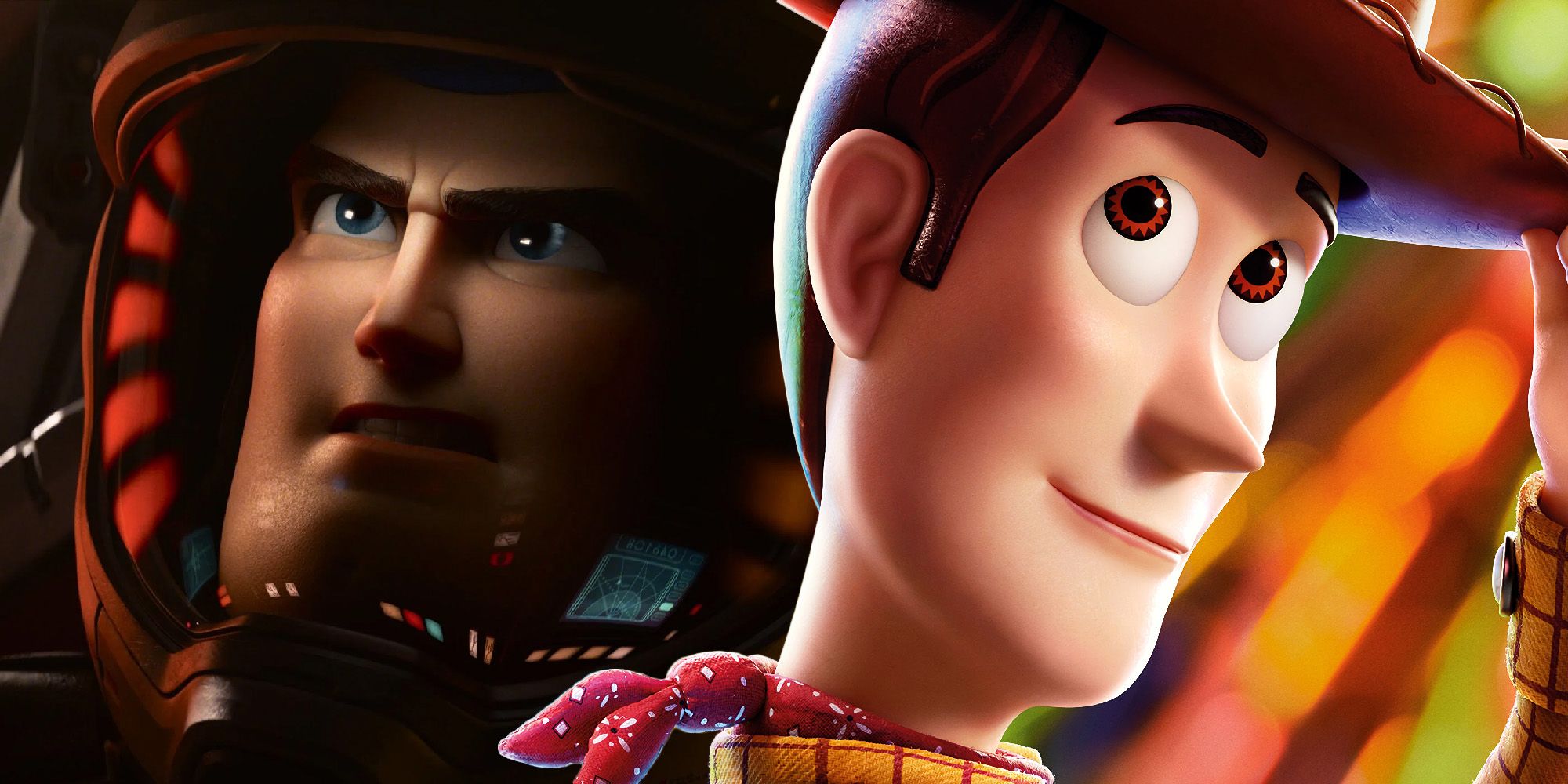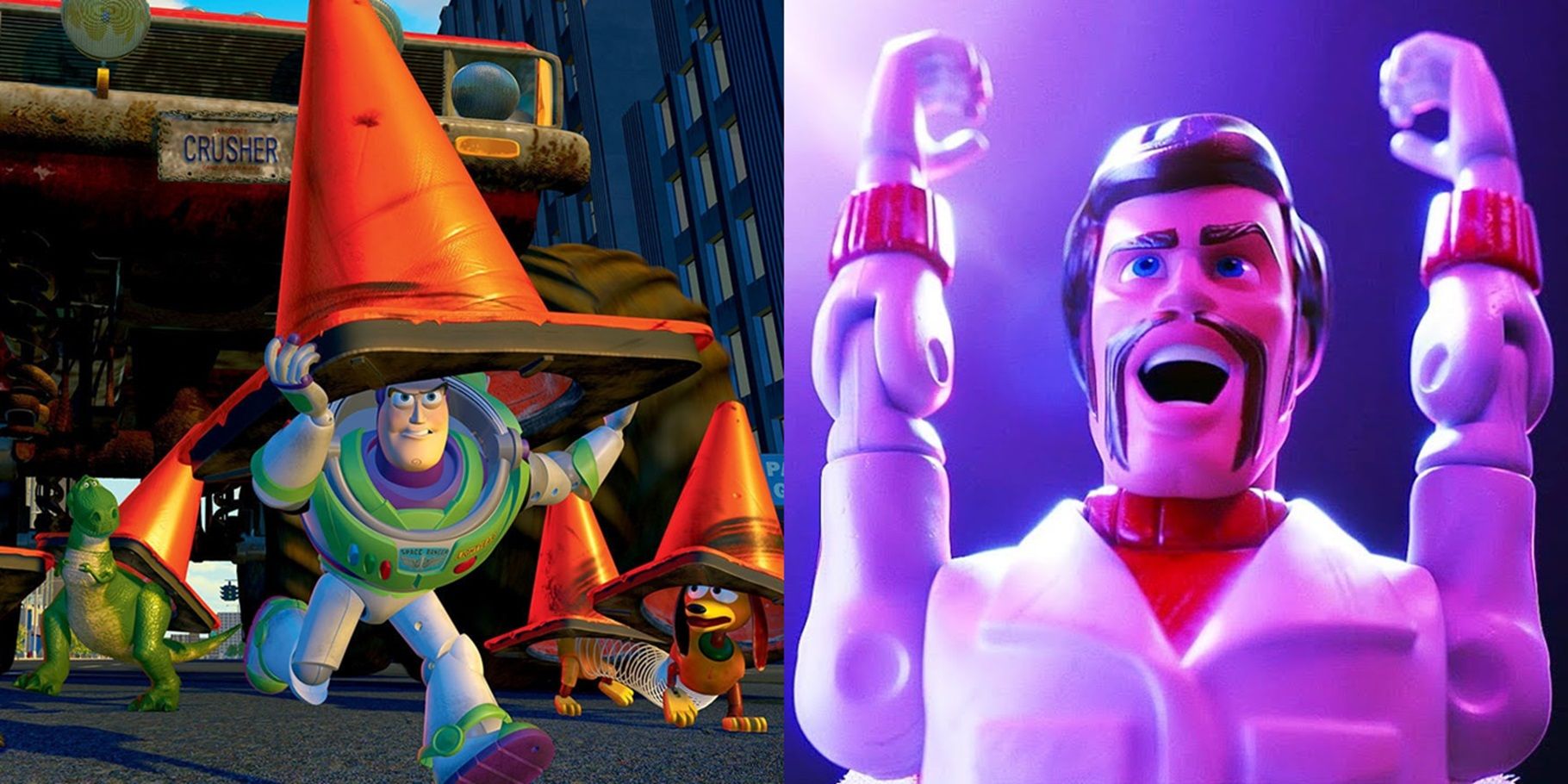Among the many new projects announced during Disney's Investor Day was a Toy Story prequel film Lightyear, proving the studio will never truly say "So long, partner" to the lucrative franchise. After the third installment put a bow on the then-trilogy, and the fourth provided a nice (albeit unnecessary) coda to the franchise, the upcoming 2022 release will explore the origins of the Lightyear character who inspired the Buzz audiences have come to know and love. But having already wrapped up the narrative twice now, why is it that Pixar can't help but keep returning to the Toy Story well?
Disney purchased Pixar Animation Studios in 2006 following a tumultuous acquisition process. The industry giant recognized Pixar's unique and innovative animation capability and sought to bring their young rival into the fold. And being brought into that fold meant toeing the Disney line where finances were concerned. From the onset of their studio-distributor relationship in the '90s, Disney and Pixar had butted heads when it came to business decisions. Pixar cherished its creations as a parent does their children, while the veteran Disney understood the marketing savvy necessary to survive in a competitive artistic landscape. Moves to squeeze more money out of Pixar properties caused friction between the two entities that troubled relations for years until the ultimate acquisition. But an agreement was struck, and Pixar began turning out sequels that bolstered the bottom line.
With ample opportunity to create toys based on favorite characters along with revitalizing interest in existing toys featured in the Toy Story films, it's no wonder Disney and Pixar would continue to create content within this franchise. Still, for many, Toy Story has fared far better than its fellow Pixar franchises when it comes to sequels and spin-offs: while Cars was a commercial and critical success, its sequel Cars 2 received mixed reviews, and Cars 3, while better received critically, underperformed in the box office.
Although fans and critics alike will cast aside Pixar's sequels as lesser-than their original counterparts, something has always been different when it came to the Toy Stories. Compare the tepid reaction to the third Cars film with the Best-Picture-nominated Toy Story 3 (2010). Even Toy Story 4 tugged at heart strings despite feeling somewhat superfluous after its predecessor's wild success. Perhaps it's a testament to the strength of the concept Lasseter and company invented in 1995 that there remains such vibrant creative material left to mine. Maybe the reason for continued returns to the Toy Story universe is not solely some investors' bottom line, but because there are simply more Toy Stories left to tell.
Understandably, many longtime fans of Woody, Buzz, and the gang will feel betrayed by this announcement, arguing to put an end to the Toy Story sequels and preserve the brilliance already laid bare. It's only natural to hold close the essential works of one's childhood and grow protective of their legacy into adulthood, not unlike Pixar's early fears of a money-hungry Disney. But at times like these, it's helpful to recall Andy's strength in Toy Story 3 when he shares that which brought him so much joy as a child with the new generation. Lightyear will introduce the beloved Toy Story franchise to new kids everywhere while giving adults yet another chance to revisit the characters of their childhood. It's only right these characters continue to be played with. After all, that's the job of a toy.


